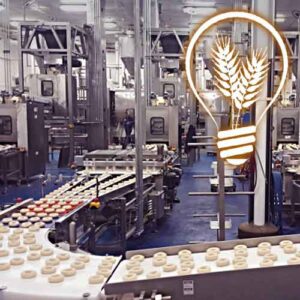We cover the latest trends in the bakery industry Our job at BakingIndustry.org is to introduce you to the baking industry and educate you on trends, developments, news and companies in commercial baking. The baking industry is one of...
We cover the latest trends in the bakery industry
 Our job at BakingIndustry.org is to introduce you to the baking industry and educate you on trends, developments, news and companies in commercial baking.
Our job at BakingIndustry.org is to introduce you to the baking industry and educate you on trends, developments, news and companies in commercial baking.
The baking industry is one of the largest industries in the United States, North America and the world. In the United States alone, it is estimated at US$480.47 billion in annual revenue in 2020.¹ That figure contributes 2.46% to the United States GDP.¹ It has a compounded annual growth rate (CAGR) of 6%.²
The baking industry creates 764,777 direct jobs paying $37.8 Billion in direct wages with an additional 786,145 jobs and $51.3 Billion in supplier wages.¹ That’s an astounding combination of $89.2 Billion in direct and supplier wages.
Baking employment
According to the Bureau of Labor Statistics (BLS) in 2020 there were 57,290 people employed as bakers, 57,250 people employed as first-line supervisors or managers of production and operating workers in food manufacturing, 122,070 people employed as food batchmakers, and 149,180 employed as food manufacturing packaging and filling machine operators and tenders. Those statistics are for NAICS business classification 311, which includes all food manufacturing. Unfortunately that data also includes non-baking food sectors such as animal processing and seafood product preparation.
For in-depth data on employment see our page on baking industry employment data.
Baking industry trends: fragmentation
The baking industry is very fragmented. It includes commercial bakeries and independent bakeries producing bread (about a third of the entire market), rolls, cookies, pastries, cakes including frozen cakes and other grain-based baked goods.
Frozen baked goods will have substantial growth and is expected to reach US$55 Billion by 2027.³ Frozen dough is used by small bakeries and local grocery stores to produce baked bread and other baked items while saving money by not hiring skilled baking professionals.
According to Chron there are about 6,000 independent retail bakeries and almost 3,000 commercial bakeries. Nearly seven out of 10 independent bakeries have fewer than 10 employees; nearly half have four or fewer employees.
That webite also reports this as the breakdown of baking products:
Bread: 32%
Rolls: 19%
Cakes: 15%
Retail bakery products: 10%
Soft cakes: 8%
Pies: 2%
Commercial baking industry by state
The US Census Bureau tracks commercial bakeries by states (NAICS code 311812), excluding bakeries with less than 100 employees for privacy. The state with the most commercial bakeries is California, followed by New York at #2, then Florida, Pennsylvania, New Jersey and Massachussetts at #5. New Hampshire and Mississippi are tied with the fewest number of commercial bakeries.
Threats to the baking industry: trends to watch
Supply chain disruptions are a problem in the current economy. Basic ingredients that are crucial to small independent bakeries as well as large commercial businesses are getting more expensive and harder to obtain. Flour, oils and shortenings are getting more expensive. Even products like chocolate chips are being reported as in short supply. Coupled with difficulties in obtaining these products are higher prices, forcing businesses to pass costs along to their customers.
Consumer tastes are always shifting. In recent years there has been an increase in health conscious food options including gluten-free food, whole grains, paleo diet products, organic products and low-carbohydrate foods. Traditional baked goods are competing more and more with other options such as fruits, nuts, and snack bars/health bars of various configurations. Certainly COVID-19 has caused complications for the baking industry including safe working conditions, difficulties in hiring and supply chain disruptions.
Climate change also brings a strain to the baking industry as farmers struggle to provide adequate water for crops, with some parts of the United States under severe, multi-year drought conditions.
¹American Bakers Association
²Technavio “Bakery Market 2021-2025”
³Global Market Insights 2021
The post 2021 trends in the baking industry appeared first on BakingIndustry.org.










